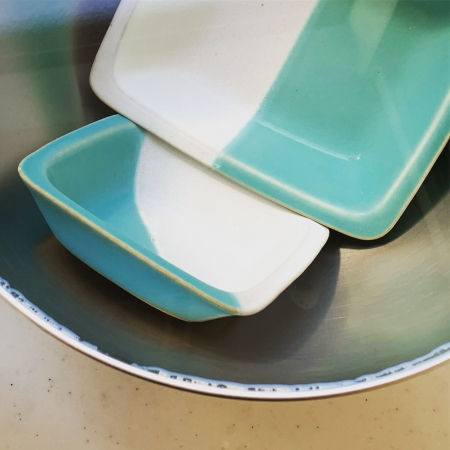へり
空間の形を「人の営み」で直に決めたい、そのための方法論を考えていると「へり」が気になる。「縁」と言い換えてもよいが、「端」とか「先端」とか、そこにまず目がいく。
人が瞬時に認識をしたり、感じ取れる範囲は限られていると考えていて、それは小さなものでも、例えば、器でも、全体を見ることはできても、それで全てを把握できないと考えていて、それは建築ならば尚更で、全体を見通すことができないから、ただ、それは見る人の能力にも依存をすることだけれども、建築ならば、空間に入った瞬間に感じ取れることも大事だが、つくり手としては、ここを見てもらうと、ここを触ってもらうと、ここを感じ取ってもらうと、という所を用意して、少しでも作品の意図や作品に込めた想いなどをくみ取って欲しくて、それが、デザインと同義だったりする。
どれほど大きくても、どれほど小さくても、作品の良し悪しは「へり」で決まる。だから、「厚み」に興味が湧く。
"Heri"
I want to decide the shape of the space directly with "people's activities". It may be paraphrased as "edge", but "edge" or "tip" is the first thing to see.
I think that the range that people can recognize and feel instantly is limited, even if it is small, for example, a vessel, I can see the whole, but I can not grasp everything, It is much more so if it is architecture, and it is impossible to see the whole thing. However, it depends on the ability of the viewer, but if it is architecture, it is important to feel it as soon as it enters the space. If you have a look here, touch here, get a feel here, prepare a place where you want to capture the intention of the work and the thoughts embedded in the work, Or synonymous with design.
No matter how big or how small, the quality of the work is determined by the "edge". Therefore, I am interested in "thickness".

